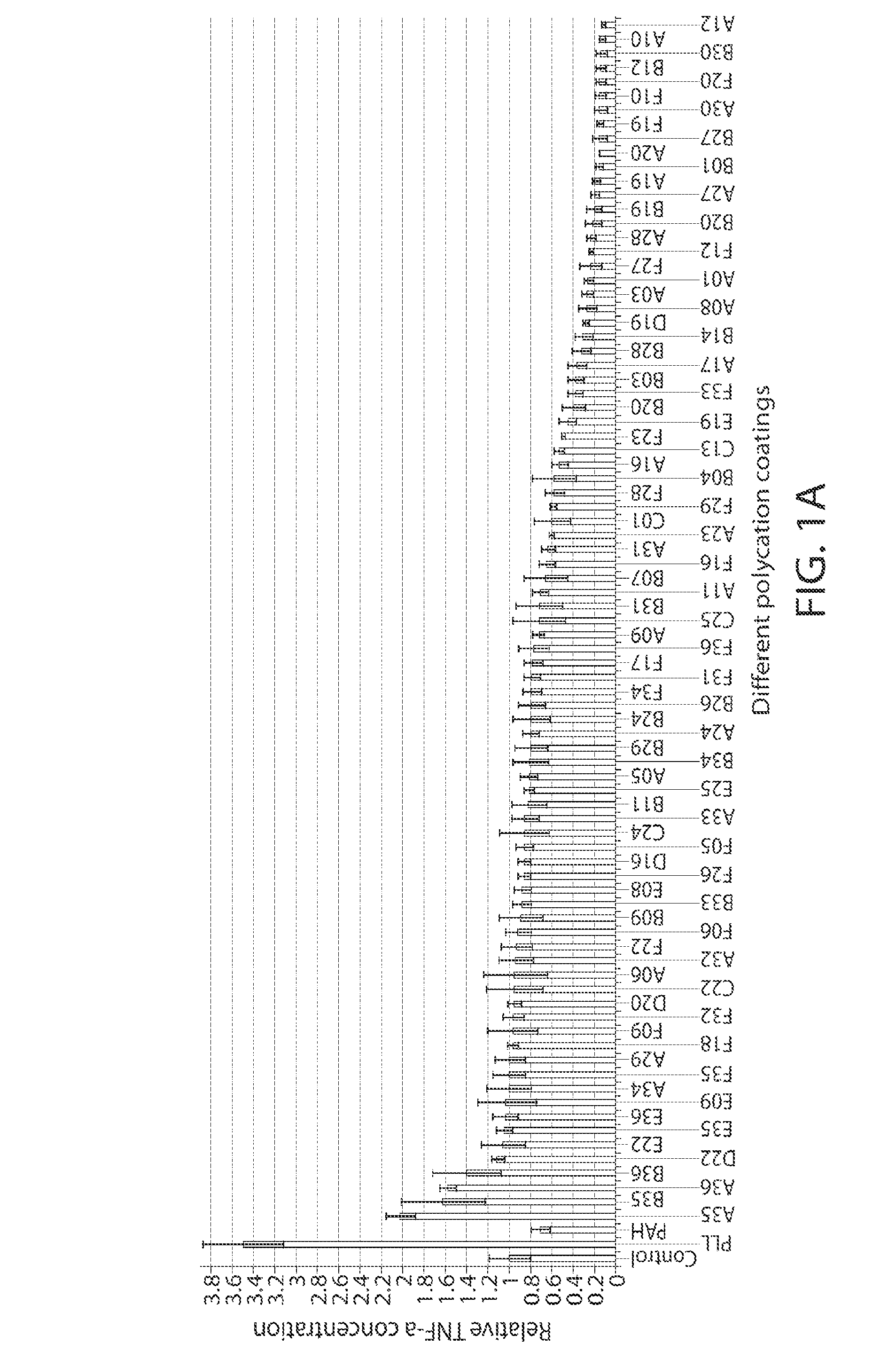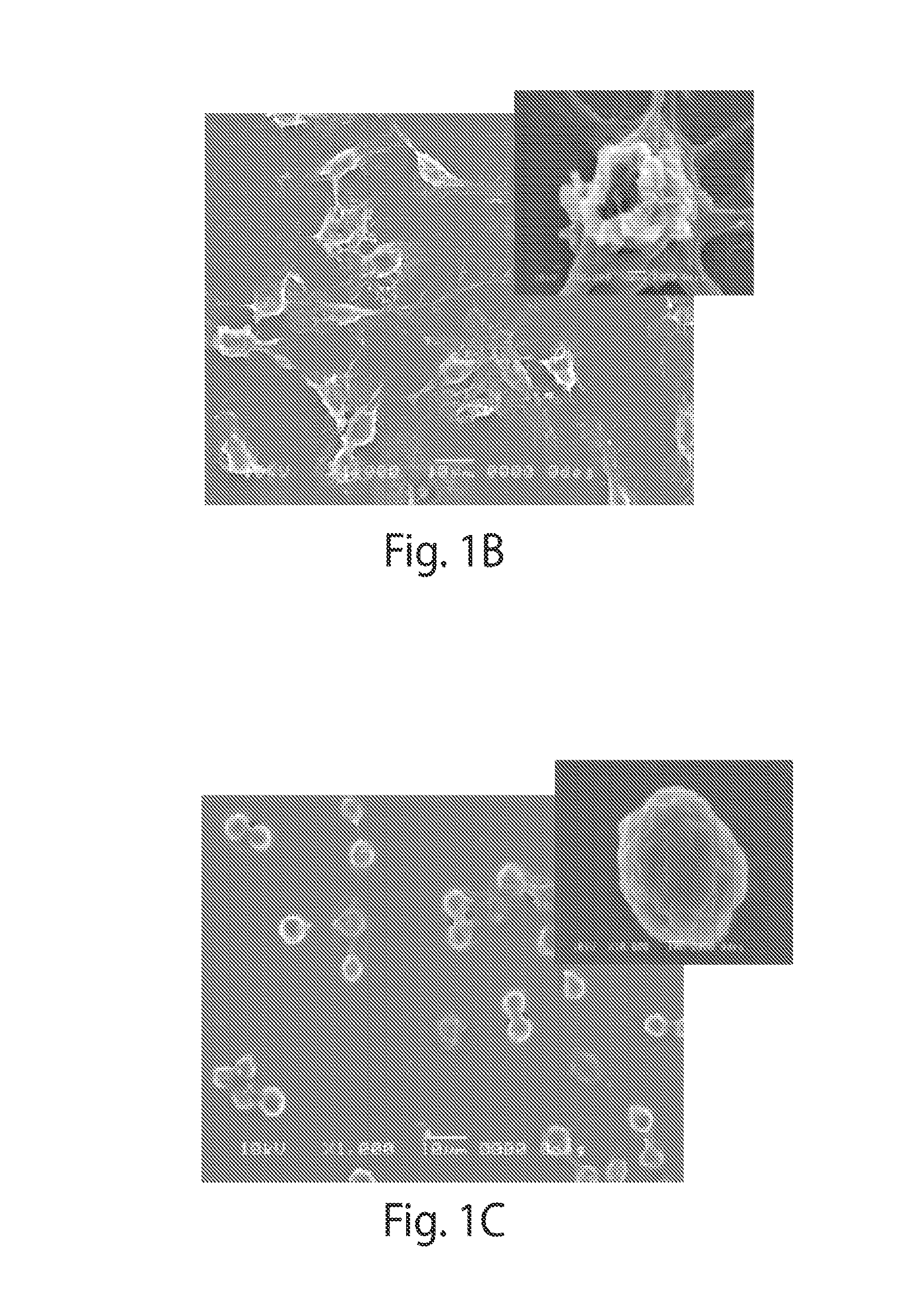Poly(beta-amino alcohols), their preparation, and uses thereof
a technology of beta-amino alcohols and poly-amino alcohols, applied in the field of poly-amino alcohols, their, can solve the problems of biocompatibility problems, device failure, or medical complications, and impede the production of beta-amino alcohols,
- Summary
- Abstract
- Description
- Claims
- Application Information
AI Technical Summary
Benefits of technology
Problems solved by technology
Method used
Image
Examples
example 1
Polymer Synthesis and Characterization
[0208]A large number of chemically diverse cationic polymers were synthesized using combinatorial polymerization. The monomers used to make the poly(beta-amino alcohols) were purchased from Sigma-Aldrich (Milwaukee, Wis.), TCI America (Portland, Oreg.) and Acros Organics (Fisher Scientific, Pittsburgh, Pa.). All the epoxide and amine monomers used in these Examples are liquid at room temperature. The polymerizations took place in bulk at room temperature under vigorous stirring until solidification typically within twenty-four hours. Solvents such as dimethyl sulfoxide (DMSO) or dichloromethane could also be used but were not required for the reactions. To ensure all the polymers were terminated with amines, the molar ratio between amines and epoxides were controlled to be 1 to 1.2 in the polymerization. The polymers that were not soluble in water or form hydrogels with water were eliminated in the subsequent coatings. The molecular weights of r...
example 2
Surface Coatings and Characterization
[0209]The PBAA solutions for coatings were made by dissolving the polymers in either DI water or slightly acidic solution at the concentration of 0.01 mol / L by repeating unit. The pHs of the solutions were measured using a bench-top pH meter (Mettler Toledo). The solutions were coated on 96-well glass-bottom plates (Matrix Technologies Corp.) for in vitro screening. Each well was soaked with 150 μL different PBAA solutions for 1 hour. The wells were then washed thoroughly with DI water 5 times. The coatings were characterized with a Kratos Axis Ultra X-ray photoelectron spectrometer (XPS) (Kratos Analytical) with a monochromatized Al KR X-ray source. The takeoff angle relative to the sample substrate for this measurement was located at 90°. This means that the effective sampling depth is about a few nanometers. We seek only a qualitative confirmation of the surface coating at this stage, no attempt was made to obtain an accurate estimate of the a...
example 3
In Vitro Screening
[0210]For in vitro screening, the PBAA coated glass-bottom plates were first sterilized using 70% ethanol for 10 minutes and washed thoroughly with PBS. RAW 264.7 cells (ATCC) were cultured in DMEM supplemented with 10% fetal calf serum and penicillin / streptomycin (all from Invitrogen). Cells were seeded at a density of 150,000 cells / cm2 on polymer-coated glass surfaces in serum containing media, incubated at 37° C. for 18 h, and then analyzed for release of TNF-α and cell viability. To assess for TNF-α, cell culture supernatant was removed and analyzed by ELISA (kit from R&D Systems) according to the manufacturer's instructions. Briefly, 96-well ELISA plates (BD Falcon) were coated with capture antibody overnight at 4° C. Plates were then washed three times with 0.01% Tween in PBS, blocked with 1% BSA in PBS, and then incubated with samples. After thorough washing, the captured TNF-α was detected using a detection antibody, HRP-conjugated streptavidin, and Ultra-T...
PUM
| Property | Measurement | Unit |
|---|---|---|
| molecular weight | aaaaa | aaaaa |
| molecular weight | aaaaa | aaaaa |
| temperatures | aaaaa | aaaaa |
Abstract
Description
Claims
Application Information
 Login to View More
Login to View More - R&D
- Intellectual Property
- Life Sciences
- Materials
- Tech Scout
- Unparalleled Data Quality
- Higher Quality Content
- 60% Fewer Hallucinations
Browse by: Latest US Patents, China's latest patents, Technical Efficacy Thesaurus, Application Domain, Technology Topic, Popular Technical Reports.
© 2025 PatSnap. All rights reserved.Legal|Privacy policy|Modern Slavery Act Transparency Statement|Sitemap|About US| Contact US: help@patsnap.com



